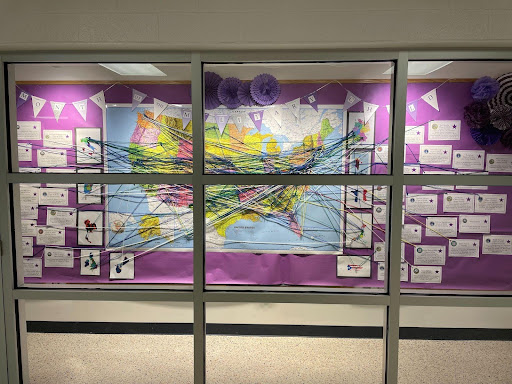
Since Snapchat’s launch in 2011, many users have felt subtle changes in the app’s use. The creators of Snapchat originally designed it as a place where people could freely express themselves to their friends. Yet, as time goes on, more Snapchat users are noticing the romantic implications of the app continue to grow.
“Talking to multiple people of the gender you like at the same time has become a big part of teen culture with Snapchat,” said senior Jenevieve Granfield.
Snapchat has unique features that delete texts after 24 hours, limit the amount of time a person can view a picture, and create a folder of pictures locked with a password. The secretive nature of Snapchat has transformed this app into a dating site for teenagers.
“Snapchat is like Tinder for teenagers. People go on there when they’re looking for something romantic,” said junior Brook Zerihun.
Unlike other social media apps, Snapchat does not have the ability to create a private account. This means that people have free range to talk to people at random, as long as they accept their friend request. Before formally knowing someone, Snapchat gives users the ability to innocently ask for their socials.
“When you see someone attractive in person, you always ask for their Snapchat, it’s easy and forward. Last week, my friend and I went on a two man [double date] with girls we met on Snap,” said junior Thomas Logan.
Snapchat has transformed into an easy way to initiate relationships with random people from different schools, counties, or even states. While new relationships have blossomed in ways that would’ve been impossible without Snapchat, many users have also spoken out about the uncomfortable atmosphere of the app. Due to the anonymous nature of online communication, many people tend to do or say things they wouldn’t normally do in real life.
“Sometimes complete strangers ask you things that are very private to you. It makes you feel violated on your own phone,” said junior Isabelle Tarboga.
When meeting new people, even on social media, first impressions are crucial. With Snapchat it’s harder to detect the qualities of a person due to the bare profiles of the app. Birthdays, zodiac signs, Bitmojis, and snap scores are the only visible attributes of a Snapchat profile. Yet, users have found a way to combat this obstacle.
“If someone has a high snap score, you should run. Just run,” said junior Diana Arrol.
Snapchats can quantify the amount of people someone talks to through the app through a snap score. Sending pictures or videos grows a person’s snap score at different amounts. This allows users to have ranges of scores from 100 to more than one million, all depending on how many people you’ve talked to since downloading the app.
“It’s a stereotype for a reason. Most people have had Snap since middle school, but even then if you have a high snap score it shows you’ve been using it a lot. Plus, people use Snapchat for promiscuous reasons,” said senior Reese McInnis.

When meeting someone with a high snap score, many are quick to stereotype them as someone who uses the app to talk to people they find attractive. The higher the score, the more the stereotype intensifies. As the app grew, so did the romantic undertones which became a catalyst for stereotypes that help navigate if a user is worth pursuing.
Snapchat, regardless of the changes of the usage or appearance, has a rich 13 years of history for highschool students worldwide. As one Snapchat user deletes the app, another will download it.
“Snapchat will never die, it’s always been a place for teens,” said senior Sophia Chebat.








